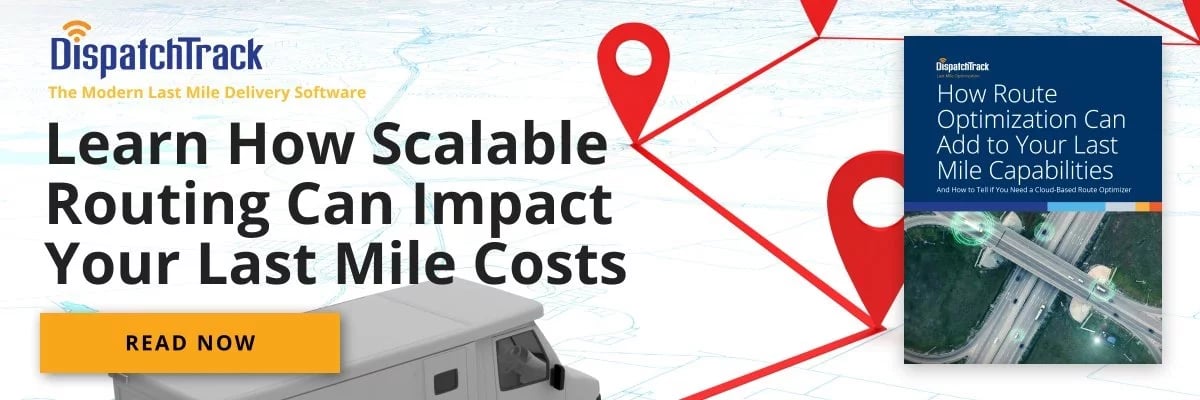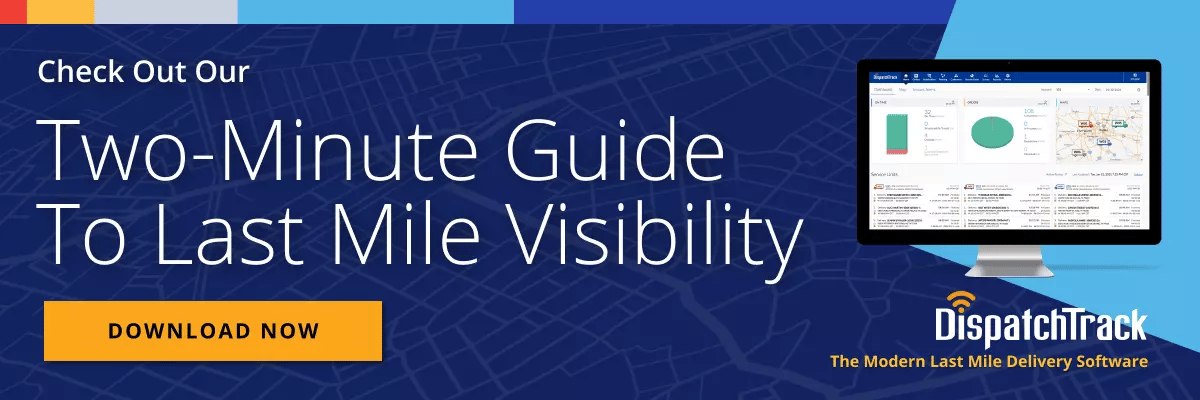Efficiency in the supply chain can be measured by on time delivery rate, or OTD. This key performance indicator (KPI) provides insights into how an organization is performing with regard to its delivery promises and is important for assessing carrier performance and customer satisfaction.

Given the fact that delivery volumes are increasing at a rapid pace, the difficulty of delivering to customers on time is increasing, causing more deliveries to be missed and delayed than ever. On time delivery rates are an indicator of service effectiveness, and optimizing these numbers with smarter planning, scheduling, and execution can help improve a company's customer service and return rate.
Customers—to say nothing of delivery organizations—are concerned with dropping on time delivery rates. If a single delivery attempt fails, there can be a domino effect, leading to delays for all the remaining orders to be delivered over the day as well as costly redelivery attempts on future runs. As customers who have bad shipping experiences are less likely to purchase from the brand again, achieving better on time delivery metrics should be a priority for every brand, carrier, logistics provider, and anyone handling deliveries.
As such, understanding the challenges associated with on time delivery—and how you can enhance your KPIs and increase customer retention—is a must.
The Importance of On Time Delivery Metrics
A customer's perception of the delivery experience is largely based on the delivery time, making on time delivery an essential factor in customer retention. Having lower on time delivery rates means more customer service calls, more customer complaints, and higher operating costs along with annoyed customers who are less likely to order again.
Customer expectations are high today, as is competition. Modern shoppers don't care about inventory management problems, supply chain issues, or any other challenges that may delay their orders. They’re primarily concerned with getting their orders at the promised date and time.
To wit, one recent survey revealed that 45 percent of consumers today expect two-day shipping when they shop online. A full 57 percent of consumers say they won't return to a brand or retailer after experiencing three late deliveries. And today's digital environment can quickly transform these customer complaints into negative reviews online, on social media, and a brand's website.
Simply put. it is imperative to maintain a high customer retention rate and keep customers satisfied by providing on time deliveries. While on time rates may not encompass everything that can go right or wrong with a given delivery, it can be a good proxy for the proportion of your customers you successfully delighted.
How to Achieve Higher on time Delivery Service Rates
Again, when it comes to customer satisfaction, on time delivery plays an important role. Luckily, intelligent delivery management technology can help you boost this vital KPI. Here’s how advanced tools can boost OTD rates and give you a competitive edge:
Automation and visibility
If last mile delivery is to succeed at scale, it must be both highly automated and highly visible. Automating as many steps as possible can help speed up the entire last mile delivery process. You can achieve increased OTD rates by automating as many areas of the last mile delivery process as possible and thereby reducing the kinds of delays that come from slow, laborious manual processes.
Visibility is equally important. Keeping track of your orders at all times will allow you to catch problems before they become more serious. Here, artificial intelligence and machine learning can help businesses understand what's really going on. For instance, if your AI-powered routing engine automatically takes in live delivery data from drivers on the road, it can alert you when there are stops for which the driver is in danger of being late. From there, you can take steps to address the situation by reaching out to the customer or driver.
Systems integration
Your supply chain is likely to consist of many systems. Now is the time to integrate them. This includes any logistics software, order management system, transportation management software, telematic, etc. The purpose of this is to keep all of the steps as transparent as possible—when you have the most up-to-date possible data, you can make smarter decisions in less time and ultimately improve your delivery performance. Beyond that, close data integrations help you ensure that there are no planning silos within your delivery operations, helping to reduce one of the most common causes of late deliveries.
Route optimization
It’s a must these days to optimize your routes if you want to improve your on time delivery metrics. Intelligent route optimization software can be used by logistics companies for scheduled deliveries to consider more than just distance and time when planning delivery routes. In this way, the order will be much more likely to reach its destination by its promised delivery date.
When you generate routes by hand, one of the most difficult aspects of the process is figuring out realistic ETAs for each stop. Because each stop impacts the next, a small error early on can have a huge impact by the end of the day, resulting in a host of late deliveries and annoyed customers. The same thing can happen when you’re using legacy routing software. That’s why your route optimization solution needs to go beyond offering the shortest or most cost-effective routes to actual ensure on-time delivery via smart ETA calculations that account for the numerous variables that impact when a driver will actually arrive at the delivery site.

Customer communication
There are certain things that will go wrong during the fulfillment process regardless of your efforts. By scheduling deliveries using smart technology, you can make sure that customers are notified as soon as a delivery exception that might result in a delay crops up. The customer can then be informed as to why the delivery date was delayed and will not be left in the dark. By informing customers and clients proactively of changing delivery statuses, you can keep them from feeling frustrated about the delivery process overall.
Of course, clear communication is just as important when things are going well as when things aren’t. There’s no way to get credit for delivering on time when you haven’t given the customer clear information about when to expect the delivery. On time delivery metrics are meant to be a proxy for customer satisfaction, so it’s important to make sure you’re actually centering the customer as you work to improve those metrics.
Connecting your resources, orders, systems, and drivers is increasingly necessary in making sure that you have control and complete visibility on the delivery process to improve on time delivery rates. The right solutions enable you to increase on time delivery rates and customer satisfaction by automating and optimizing last mile delivery logistics and fulfillment processes, increasing efficiency, enhancing visibility, and ultimately delighting customers with your high on time delivery metrics.
